Clancy Tucker's Blog, page 134
November 20, 2018
21 November 2018 - A LIST OF LOST ENGLISH WORDS

A LIST OF LOST ENGLISH WORDS
G'day folks,
A team of linguists at the University of York has excavated 30 “lost” words from the English language. These words, they say, have fallen out of use but could be plenty useful again in the world of today. They found them by looking through old books and dictionaries, the BBC reports.
According to the York Press, the words include: Snout-fair: Having a fair countenance; fair-faced, comely, handsome
Betrump: To deceive, cheat; to elude, slip from
· Coney-catch: To swindle, cheat; to trick, dupe, deceive
· Slug-a-bed: One who lies long in bed through laziness
· Momist: A person who habitually finds fault; a harsh critic
· Peacockize: To behave like a peacock; esp. to pose or strut ostentatiously
· Sillytonian: A silly or gullible person, esp. one considered as belonging to a notional sect of such people
· Merry-go-sorry: A mixture of joy and sorrow
· Teen: To vex, irritate, annoy, anger, enrage / To inflict suffering upon; to afflict, harass; to injure, harm
· Wasteheart: Used to express grief, pity, regret, disappointment, or concern: “alas!” “woe is me!” Also wasteheart-a-day, wasteheart of me
· Dowsabel: Applied generically to a sweetheart, “lady-love”
· Ear-rent: The figurative cost to a person of listening to trivial or incessant talk
So perhaps you are feeling like a slug-a-bed this morning. Now you can complain about paying ear-rent to your dowsabel, who, to be honest, has a tendency to peacockize.
This project was sponsored by an insurance company that is now running some sort of contest where people can vote on which of these words should be re-embraced by English speakers. Wasteheart! Does that make you feel betrumped or coney-catched, like a sillytonian? Does it bring a bit of merry-go-sorry to your day?
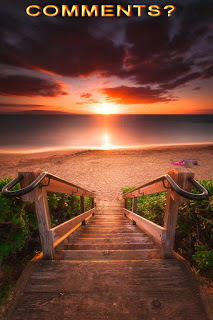
Clancy's comment: Mm ... Doubt if I will include any in my latest book.
I'm ...
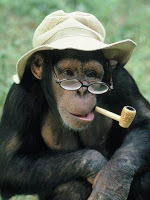
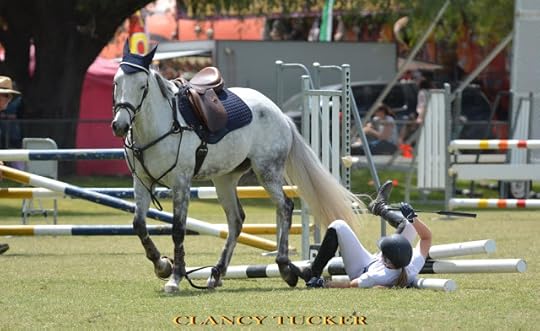
Published on November 20, 2018 11:44
November 19, 2018
20 November 2018 - PICTURES THAT MOVE

PICTURES THAT MOVE
G'day folks,
Check out some more of those moving pictures. Some of these are outstanding creations.
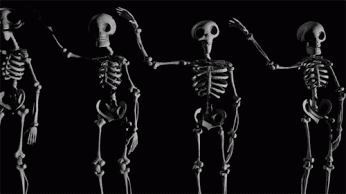
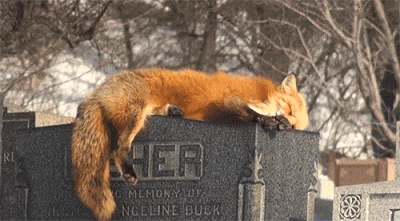

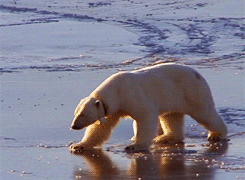

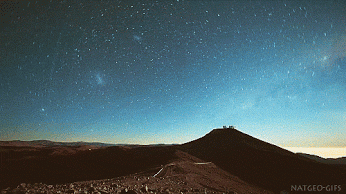

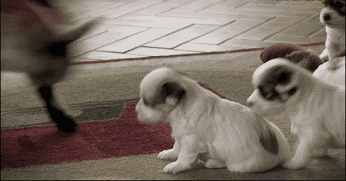

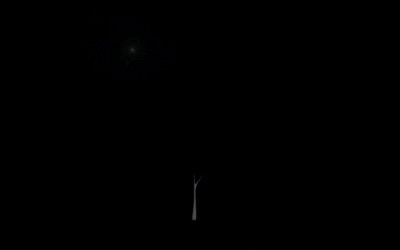




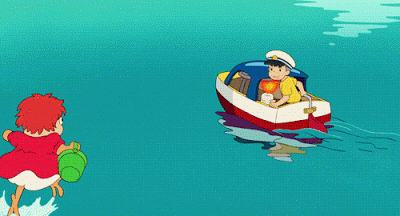

Clancy's comment: Love the baby goat and the pups. The polar bears are pretty cool as well.
I'm ...
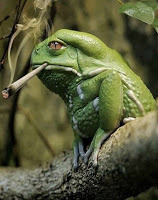

Published on November 19, 2018 12:30
November 18, 2018
19 November 2018 - ANOTHER AMERICAN GHOST TOWN
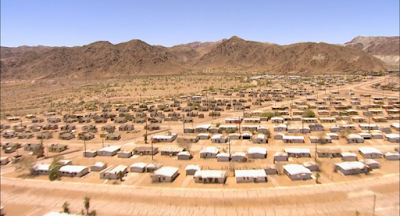
ANOTHER AMERICAN GHOST TOWN
G'day folks,
Yep, another abandoned town.
E agle Mountain is among the America’s best preserved ghost towns, mostly due to the fact that it’s one of the newest. In the shadows of Joshua Tree in in Riverside County, the town was founded in 1948 by Henry J. Kaiser, a.k.a, the father of modern American shipbuilding. And yet even with a great industrialist on its side, this town tells a familiar story of abandonment.

It was a rich iron ore deposit that brought Henry Kaiser to Eagle Mountain, and at its height during World War II, the town had a population of over 4,000 people. There were wide boulevards, tennis courts, several schools, churches, an auditorium, a park, a shopping center, a swimming pool and a bowling alley. In the 1970s, resources were running low and environmental concerns slowed down the mining operations. In 1981, after 35 years of mining, the Kaiser Corporation announced the end to operations there altogether.
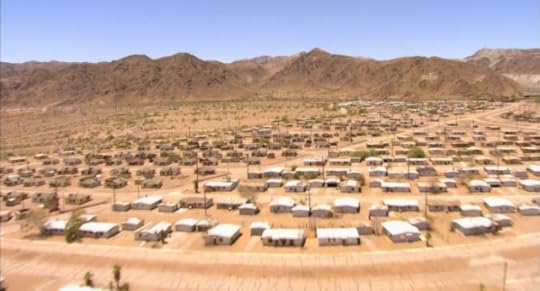
The last high school class graduated from Eagle Mountain in 1983 and only the few residents left behind clung on to the hope of a future for their desert home. A few years later, the town’s shopping mall was converted into a prison, which only lasted for 5 years until budgetary problems and a fatal riot closed the correctional facility down for good. To keep any kind of industry alive in the town, it was even proposed to turn the area and its old mine into a giant landfill– but that idea has never found much traction.

Ironically, the only interest in Eagle Mountain lately has come from Hollywood, when the area is used as an occasional film set. Universal Studios used the town to make a 3D film for a theme park attraction based on the original Terminator 2 – Judgment Day movie. Other movies made there include apocalyptic action flicks such as The Island (2005) and Battle of Los Angeles (2011).

As of 2007, the perimeters of both the town and mine have been fenced and gated to the public. The easiest way to see Eagle Mountain today is by drone.
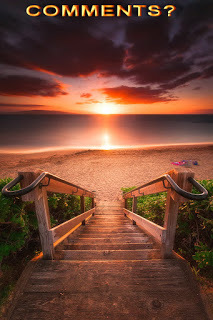
Clancy's comment: Amazing, eh? I see these places and wonder about homeless folks, and shake my head.
I'm ...
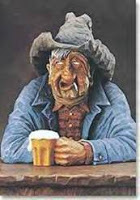
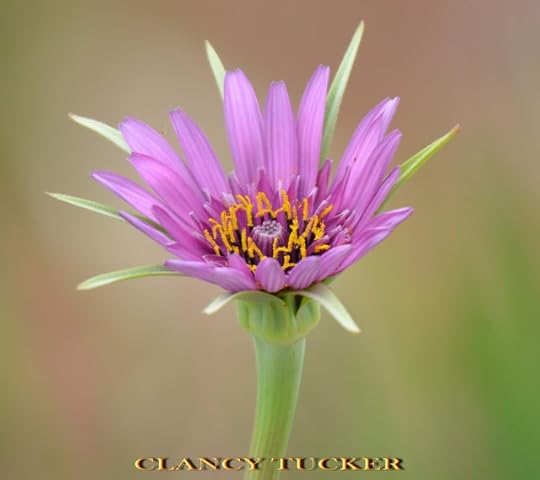
Published on November 18, 2018 12:06
November 17, 2018
18 November 2018 - TOP QUOTES WORTH READING

TOP QUOTES WORTH READING
G'day folks,
Welcome to some wise reminders ...
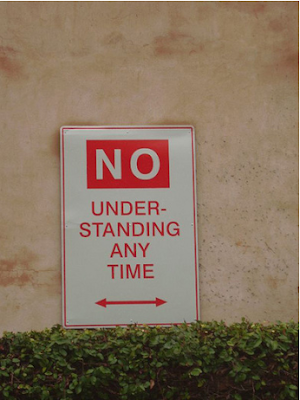
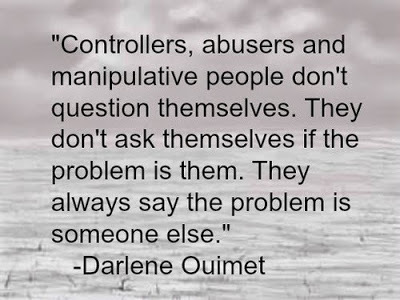









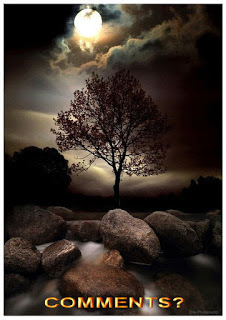
Clancy's comment: Once upon a time ...
I'm ...

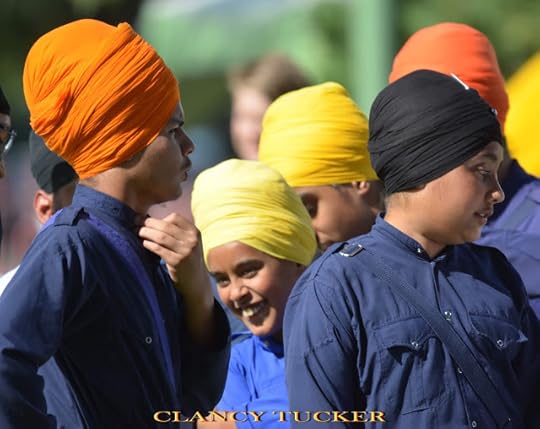
Published on November 17, 2018 14:55
November 15, 2018
16 November 2018 - HARRY ANDREW MILLER - GUEST WRITER
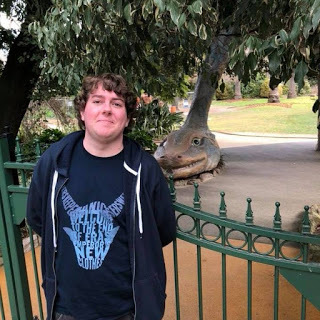
HARRY ANDREW MILLER - GUEST WRITER -
G'day folks,
Today, I interview an aspiring young writer from my home State of Victoria.
Welcome, Harry ...
1. TELL US A LITTLE ABOUT YOURSELF AND YOUR WRITING JOURNEY.First of all, hello Clancy, and thank you for allowing me to guest post on your blog! My name is Harry Andrew Miller, and I am a 25-year-old from regional Victoria, in Australia. Recently, I’ve begun my own freelance writing business, where I specialise in writing about anything and everything history related! I find history so fascinating to learn about and, as a result, I love writing about it. My favourite areas to write about include twentieth century history, and the First World War.
2. WHEN AND HOW DID YOU BECOME A WRITER?I’ve loved writing for as long as I can remember! When I was a child, I used to write as frequently as I could. I remember, in primary school, I used to write summaries of the latest movies I had seen, and video games that I had played. It wasn’t detailed, by any account, but I just felt this desire to write whenever I got the chance. I’ve recently graduated from university, with a Bachelor of Education, and a Diploma of Language and Culture, and both degrees allowed me to flex my creative muscles, and gave me the opportunity to write in a variety of ways, on a variety of topics, which I really appreciated.
3. WHAT TYPE OF PREPARATION DO YOU DO WHEN WRITING? DO YOU PLAN EVERYTHING FIRST OR JUST SHOOT FROM THE HIP?Recently, I wrote a short, commissioned piece on the burial crisis, and the idea that the planet is running out of space to bury our dead. For that piece, quite a lot of the research was already done for me, so I simply had to read the research, find relevant quotes, and write the document, which was quite cathartic actually! Normally, I will do a short amount of research, before deciding on a rough outline of what I want to write. Once that is done, I will see if there are any areas that need further research, and remedy that as needed. I’m not sure how other writers go about it but, for me, research is a continual process. As I’m writing, I constantly find myself scouring the internet for quotes, or sources to back up what I’m saying. I guess, as a history writer, research and preparation forms a larger part of the process than, say, writing a fantasy novel, where the story is yours to create, but I would imagine that research and preparation would still be quite a continual process.
4. WHAT DO YOU ENJOY MOST ABOUT BEING A WRITER?The variety. As a freelance history writer, I am able to write on a variety of different topics, from the fall of the Roman Empire, to the First World War, to the Cold War. Anything is up for grabs. I’ve also begun to branch out, and try different things. I recently wrote a review for a novella I was reading, and I’m starting to take photos of historical sites I visit, so I can create a photo collage and display that on my website. I really enjoy the wide variety of content I can create, as it allows me to display my range of skills. Connecting with other writers, on social media sites such as Twitter, is also an amazing feeling. And really makes me feel connected to the community.

5. WHAT IS THE HARDEST THING ABOUT BEING A WRITER?For me, the hardest thing would have to be prompting myself to write continuously. I get distracted sometimes, and its so easy for me to say to myself “Okay we’ve done twenty minutes of writing, time to check Twitter.” So, to prevent this, I have to set goals for myself and prompt myself to keep writing until I achieve those goals. It’s a hard process, especially when working at home, but I know that I have the discipline to achieve my goals.
6. WHAT WERE YOU IN A PAST LIFE, BEFORE YOU BECAME A WRITER?For a long time, I wanted to become a history teacher, believe it or not! I thoroughly enjoyed learning about history, and I thought I would enjoy teaching history as well. Alas, it was not for me, I was more interested in the raw content, than the actual act of teaching. When I decided to become a freelance history writer, it was as if a whole new world opened up to me. I realised I could engage with the raw history content, and learn as I wrote. It was really eye opening for me.
7. WHAT ARE YOU WORKING ON AT THE MOMENT?Currently I’m working hard on pitching to various history magazines and sites, trying to show off my skills, and get my name out there. I’m also reading a few historical books, so I can review them for my website, and assembling a collection of photographs of historical sites I visit, so I can display them on my website. It’s a lot of little projects at once, but I feel really confident and enthusiastic that people will love it all!
8. WHAT INSPIRES YOU?Seeing other writers going through the same thing as me, and feeling the same feelings. We all have days of self-doubt, of “Am I doing the right thing?” “Did I make the right choice?” “What if I fail?” and, when I see other writers discuss going through the same thing, it makes me feel confident. We’re all in this together, and we’re all trying to achieve something, and that is amazing!
9. WHAT GENRE DO YOU WRITE?As a history writer, I’ve naturally gravitated towards academic non-fiction, so I can write essays, biographies, summaries, etc. But recently, I’ve began to explore other types of historical writing, like creative nonfiction. I’m also reading some historical fiction books at the moment, and its really inspired me to try my hand at writing some short-form historical fiction. So, who knows, we may see some of that from me in the future!
10. DO YOU HAVE ANY TIPS FOR NEW WRITERS?I’m a new writer myself, so please don’t take any of my tips as gospel. But, at least from my experience, the greatest thing a new writer can do is have a close circle of friends to rely on. When I created my website, and set up my business facebook page, my friends liked it, and shared it on social media, and it really helped to get my name out there. Friends are also able to read over your work, for when you need a second pair of eyes, and they’re able to give you accurate and constructive feedback. More than anything else, I believe having a close group of friends is instrumental in becoming a new writer.

11. DO YOU SUFFER FROM WRITER’S BLOCK?I don’t know if I would say I suffer from writer’s block, but I definitely have times where I feel like it is impossible to get the words in my head onto paper. When that happens, I usually don’t try to force it, because it will just stress me out. I usually distract myself for a bit by either watching a movie, or hanging out with friends. Then, later on, I can come back to my writing and feel refreshed, and ready to give it another try.
12. DO YOU HAVE A PREFERRED WRITING SCHEDULE?I work early in the morning, so I prefer to do most of my writing towards the end of the day, after the sun has set. It is at this time that I feel relaxed, I don’t have to deal with any other issues, and I can just focus on my writing.
13. DO YOU HAVE A FAVOURITE WRITING PLACE?I like to do most of my writing in my room, because its where I feel my most comfortable. As my writing becomes more full-time, I would ideally like to set up a home office, as I think that would help me maintain more of a ‘professional’ mindset, so I wouldn’t become distracted as often.
14. WHAT IS YOUR GREATEST JOY IN WRITING?As a history writer, I really enjoy writing on a variety of different topics, because it allows me to explore different historical periods. I’m currently researching the assassination of Archduke Franz Ferdinand, an event which sparked the First World War, and its really fascinating to read recounts of the event, from people who were there at the time. Learning about what happened in history, and how events played out, is probably my greatest joy.
15. OTHER THAN WRITING, WHAT ELSE DO YOU LOVE?Apart from writing, I enjoy hanging out with my friends, going on long drives, taking photos of historical sites, or beautiful landscapes, and watching new movies and tv shows. If its something that can be done with a couple of close friends, I’m usually there!
16. DESCRIBE YOUR PERFECT DAY.My perfect day would involve me inside, with a couple of close friends, watching something on Netflix, with bowls of food and wine, as it rains outside. I love that ‘cozy’ feeling, and my perfect day would definitely involve me feeling cozy, and not having to worry about life’s stresses for a few hours.
17. IF YOU WERE STUCK ON A DESERT ISLAND WITH ONE PERSON, WHO WOULD IT BE? WHY?I suppose everyone would normally want to be stranded with a famous person, but I would love to be stranded with my brother. He’s fifteen years younger than me, and we fight sometimes, but I honestly love him more than anyone else in the world. He is smart, funny, and we like the same types of things. If anyone could keep me from getting bored on a desert island, it would have to be my brother!

18. WHAT WOULD YOU SAY IF YOU HAD THE CHANCE TO SPEAK TO WORLD LEADERS?I think I would simply ask them to “Prove it,” to prove their claims. So many leaders do things, often going against the best interests of the public, and they aren’t always properly scrutinised for them. In Australia, the government often accepts handouts and funding from the coal industry, even though coal powered plants are often less effective, and less environmentally friendly, than some of the alternatives. As much as our leaders claim that coal is ‘clean’ and is the best choice, we know it isn’t. I would ask our leaders to prove their claims, and to prove that what they’re saying isn’t just a thinly veiled lie.
19. WHAT ARE YOUR PLANS FOR THE FUTURE?In the near future, I want to create more pitches for websites and magazines, as well as create a photo collage for my website. Then I want to read more historical books, and begin reviewing them for my site. Long term, I guess I want to become more successful with my freelance writing, to the point where I could make it my full-time job. I know that is still a distant dream at this point, but it is nice to have something to work towards.
20. DID YOU EVER THINK OF QUITTING?I’ve only been a freelance writer for a short time, at this point, but I would say there are definitely days where I feel deflated, and feel like quitting. Its stressful to put yourself out there, and risk having your work criticised and, when you get less than stellar feedback, its always frustrating and disappointing. On days like those, I know I have to remind myself that not everyone will enjoy what I do, but the real joy is in finding those who do. Those are the people I want to write for!
21. HOW WOULD YOU DEFINE ‘SUCCESS’ AS A WRITER. I suppose it depends on what your goal is. For me, my goal is to eventually become sufficient enough that I can make freelance writing my fulltime career. So that is what success will look like, to me. For others, success may mean getting a manuscript published, or completing their manuscript in the first place. I guess that, no matter what our goals are, we are already successful, because we have put ourselves out there, and taken a risk in becoming writers!
22. WHAT SHOULD READERS WALK AWAY FROM YOUR CONTENT KNOWING? HOW SHOULD THEY FEEL?Ultimately, my historical content is meant to inform, but I also like to think it will engage readers, and make them interested in history. If anything, I want readers to feel like history isn’t just some old facts, learned in classrooms. It is a living, breathing thing, with tangible, real world lessons. I want readers to become invested and interested in history!
23. WRITING IS ONE THING. WHAT ABOUT MARKETING YOU, YOUR BOOKS AND YOUR BRAND? ANY THOUGHTS?Getting my name out there, and promoting my brand, has definitely been a challenge. Its hard to start from nothing, from zero followers, and try to build up a sizable fanbase. Its at this point where close friends are really helpful. Friends can help by sharing your website, and promoting your social media pages to their friends. It may be a small step, but it’s a step in the right direction, and it definitely helps get your brand off the ground.
24. DESCRIBE YOURSELF IN FIVE WORDS.Less organized than I appear!
25. WHAT PISSES YOU OFF MOST?Maybe this is an obvious, or a common, answer, but I get really annoyed by people who don’t put in the effort. I’ve had friends in the past who would never put in the effort to speak to me, or to engage with me, and its so disheartening. Fortunately now, the friends I have are genuine, and they genuinely want to interact with me!

26. WHAT IS THE TITLE OF THE LAST BOOK YOU READ? GOOD ONE?The last book I read (and reviewed on my site!) is a novella known as ‘The Sins of Jubal Cooper.’ It’s a compelling, little novella by Mary Lingerfelt, set during the Great Depression, and its actually really good!
27. WHAT WOULD BE THE VERY LAST SENTENCE YOU’D WRITE?Harry died the way he lived: Happy.
28. WHAT WOULD MAKE YOU HAPPIER THAN YOU ARE NOW? CARE TO SHARE?I’m not too sure. I feel really content with life right now. I have good friends, a close family, and I feel confident about my freelance writing business. Sometimes I tend to overthink things, especially in regards to relationships, and I’d probably be a lot less stressed if I didn’t do that. But every day is a new learning experience, and I look forward to each new day!
29. ANYTHING YOU’D LIKE TO ADD?Yes! If you like what you’ve read, or if you want to know more about me, feel free to visit my website at www.harryandrewmiller.com
There’s a link to all of my social media accounts there, and I’d be so grateful if you could follow me. If you do, send me a message to let me know that you came from here, so I know how you found me, that would really help me out! My website has samples of my written work, as well as my (semi) frequent blog, where I post about anything and everything related to history writing. I hope you enjoy it, and I hope you enjoyed reading about me today!

WEBSITE

Clancy's comment: Go, Harry! Thank you. Keep going.
I'm ...
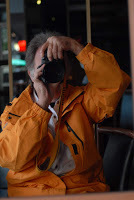
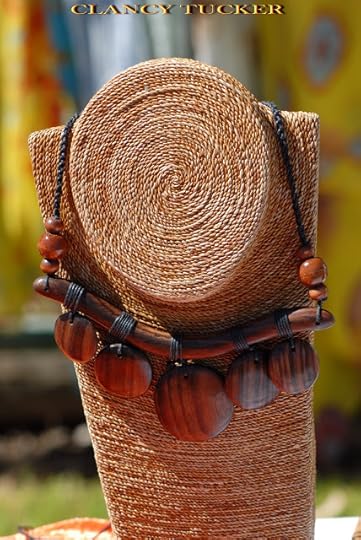
Published on November 15, 2018 12:48
November 14, 2018
15 November 2018 - ABANDONED CASTLE WITH HISTORY IN SCOTLAND
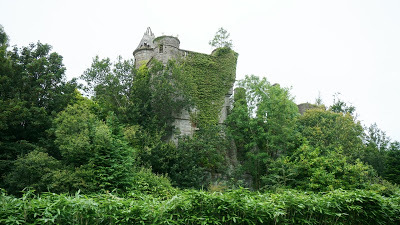
ABANDONED CASTLE WITH HISTORY IN SCOTLAND
G'day folks,
Yep, here is another abandoned structure. This one is in Scotland.
S he’s been asleep for over half a century. Cocooned by a forest, half swallowed by nature’s encroaching fingers. A forgotten castle in the Scottish Highlands, waiting for its story to continue or find an ending. Such places do exist, you just have to be curious enough to find them.
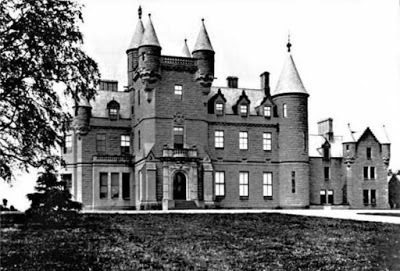
So you want to know where it is. Locals in Stirlingshire, Scotland know her as Buchanan Castle. She’s the elephant in the room in their quaint country village.
Built in 1852, the castle was commissioned by James Graham, 4th Duke of Montrose and it became the home for the Montrose family, and remained as such until the 1920s. James’ father was the 3rd Duke of Montrose, the man responsible for the persuading Parliament to remove the law forbidding Scots to wear tartan and the traditional highland dress. It remains the seat of the Clan Graham to this day.
The Montrose family owned the castle until 1925 when it was sold and opened as a hotel in the 1930s with a golf course. The outbreak of World War II delayed further plans for residential development on the estate, at which time the house was requisitioned as a hospital.



Rudolf Hess, a prominent politician in Nazi Germany, appointed Deputy Führer to Adolf Hitler in 1933, was a patient at the Buchanan castle’s makeshift hospital in 1941 after he flew solo to Scotland in an attempt to negotiate peace with the United Kingdom. He crash landed his plane, injuring his foot and was taken prisoner, convicted of crimes againstpeace. He was sentenced to serve a life sentence until his death by suicide. Hitler had ordered the German press to characterise Hess as a madman gone rogue when he realised the blundered mission might leave his allies, Italy and Japan, suspicious that the Führer was trying to secretly open peace negotiations with the British.


After the war, the building served briefly as the Army School of Education and in 1954 the roof was removed from the house and outlying parts of the building were demolished. Removing the roof of a house would deem a property uninhabitable by the government and avoid the burden of taxes on a house that was no longer wanted. A number of residential buildings were subsequently built in the castle gardens and grounds.
As recently as 2002 and 2004, redevelopment proposals were put forward for the category B listed building to be restored and turned into residential flats, but those plans were refused. The castle is currently included on the
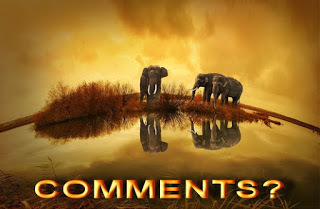
Clancy's comment: Wow. Yet, another deserted property, eh? What a waste.
I'm ...

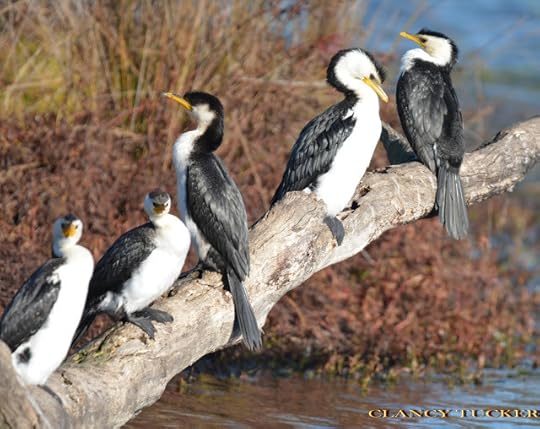
Published on November 14, 2018 11:47
November 13, 2018
14 November 2018 - FACTS ABOUT THE AWESOME POLAR BEAR
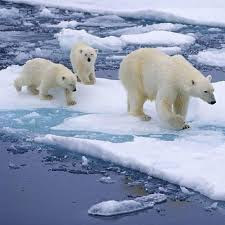
FACTS ABOUT THE AWESOME POLAR BEAR
G'day folks,
The polar bear is a hypercarnivorous bear whose native range lies largely within the Arctic Circle, encompassing the Arctic Ocean, its surrounding seas and surrounding land masses. It is a large bear, approximately the same size as the omnivorous Kodiak bear.
At home in the ice-covered Arctic, Polar Bears are the world's largest land carnivore. They feed mostly on seals, can swim up to 60 miles without a break and can sniff out prey up to 10 miles away.

Quick FactsType: MammalDiet: CarnivoreLife span: 25–30 yearsSize: 2.2–2.5 mWeight: 772–1,543 lbHabitat: Ice sheets and coastal watersRange: ArcticScientific name: Ursus maritimus· Polar Bears are at home in the Arctic, living in parts of Canada, Alaska, Greenland, Russia and Norway. Though born on land, they spend most of their time at sea and hunt only from sea ice.
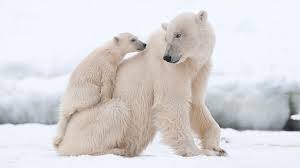
· What do Polar Bears eat?· Polar Bears are usually carnivorous, although they are known to feast on other food sources when prey is scarce. Seals make up the majority of their diet, but they also consume carcasses, such as those of dead whales.
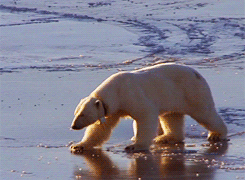
· How do Polar bears hunt their prey?· Polar Bears are excellent swimmers. They can swim for more than 60 miles without having a break, yet they rarely hunt at sea. Instead, they use the ice as a platform and wait patiently for seals to pop up at breathing holes or ice edges.
· How do Polar Bears stay warm?· Polar bears live in one of the planet’s coldest environments and depend on a thick coat of insulated fur and a layer of insulating fat to keep warm. They even grow fur on the bottom of their paws, which not only protects them against the cold ground but also helps them grip on the ice.· Their skin also has a key role to play in keeping them warm as its unusual black colour means it absorbs heat from the sun.
· Where do Polar Bears give birth?· Female Polar Bears give birth during the winter months in snow dens dug out from deep snow drifts. The dens provide protection from hungry predators and insulation from the harsh cold winter.
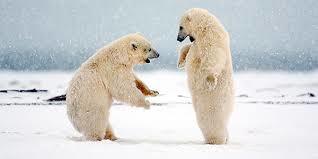
· Are Polar bears sociable?· Polar Bears live a solitary lifestyle, with only mother and cubs staying together for any length of time.
· Are Polar bears dangerous?· Polar Bears are powerful predators that often do not fear humans, which can make them dangerous, especially since the sea ice is disappearing and prey is scarce and hard to catch. Near human settlements, they can acquire a taste for garbage, which brings them and humans into dangerous proximity.
· Do people hunt Polar bears?· Yes, they do. For thousands of years, Polar Bears have been a key figure in the material, spiritual, and cultural life of Arctic indigenous people.
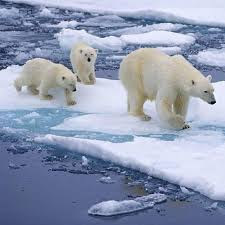
Polar Bears have no natural enemies; humans are their biggest threat. They are classified as vulnerable in the IUCN Red List of Threatened Species, with 8 of the 19 Polar Bear subpopulations known to be in decline. Though following the introduction of controls and quotas, some populations are recovering.
The International Union for the Conservation of Nature (IUCN) now lists global warming as the most significant threat to the Polar Bear, primarily because the melting of its sea ice habitat reduces its ability to find sufficient food.

Clancy's comment: They must be great survivors to put up with such a cold environment.
I'm ...
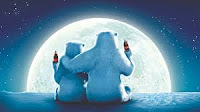
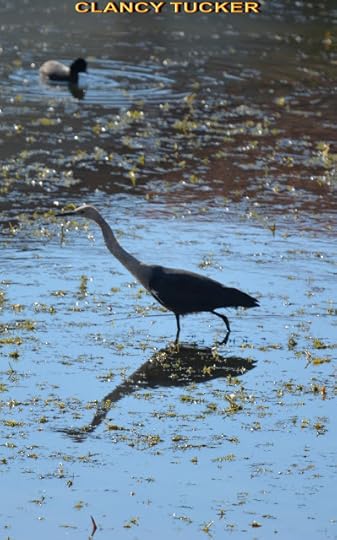
Published on November 13, 2018 11:55
November 12, 2018
13 November 2018 - THE FIRST ‘MISS SOVIET UNION' BEAUTY PAGEANT
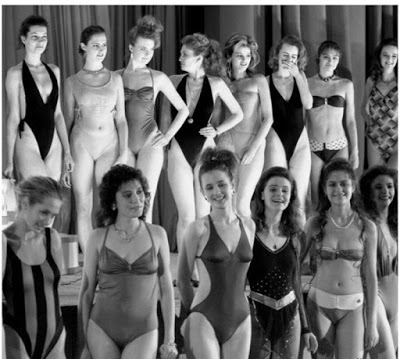
THE FIRST ‘MISS SOVIET UNION' BEAUTY PAGEANT
G'day folks,
Ever wondered how the Soviet Union became involved in world beauty pageants? I certainly hadn't but here is some background.

T he year was 1988, the iron curtain was falling and the final leader of the Soviet Union, Mikhail Gorbachev, was patching up foreign relations with America after a schmoozy dinner with Ronald and Nancy Reagan in Washington. The country was ushering in a new era of social freedom and a flood of information about the lives of people abroad had triggered a catch-up period of imitation for the USSR.
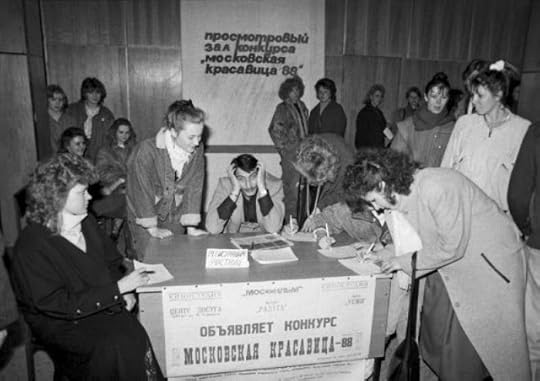
The Puritan ways of the Soviet Union had previously repressed the frivolity of show business, celebration of beauty and the female form or sexy fashion. So when the 30 year ban on beauty pageants was lifted and the first ever official government-approved beauty contest in the Soviet Union was announced, it was a pretty huge deal.
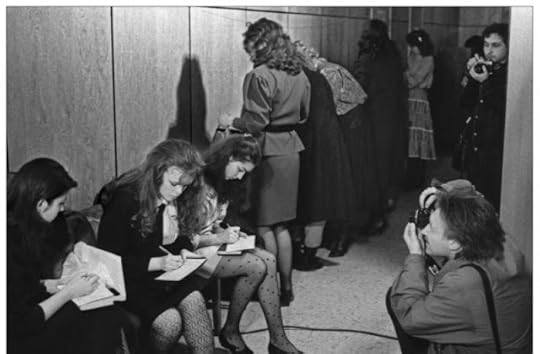
Not to throw all their communist values out the window at once, women of all ages, status, size and shape were invited to enter the contest. “Every ordinary person, every beautiful woman or one that feels beautiful, come and show themselves”.

Tryouts were held at Gorky park and queues stretched to a couple kilometers long. It was an event compared by the press to Garagin’s flight to space.After many months of monokini mishaps and hairspray overdoses, a sixteen year-old Maria Kalinina was crowned Miss USSR. She was sent to travel around the world, and reportedly won the hearts of presidents, ministers, and a no doubt a few inappropriate propositions from wealthy suitors. She later moved to Hollywood where she pursued a career as an actress, changing her name to Maria Kalin.

She now teaches Kundalini yoga in her studio in Los Angeles.

Clancy's comment: I'm sure you were dying to know this. Mm ... The beauty pageant business would involve millions of dollars today.
I'm ...
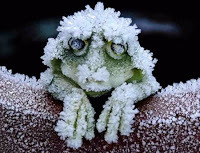

Published on November 12, 2018 11:50
November 11, 2018
12 November 2018 - HARRIET BEECHER STOWE – WRITER & ANTI-SLAVERY CAMPAIGNER
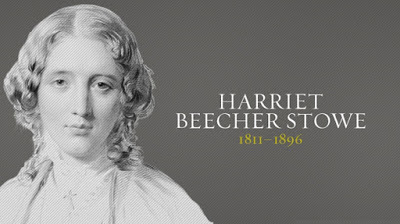
HARRIET BEECHER STOWE - WRITER & ANTI-SLAVERY CAMPAIGNER -
G'day folks,
Now, here is a woman who was not only a famous author.
Harriet Beecher Stowe was a writer and anti-slavery campaigner. She is best known for her book ‘ Uncle Tom’s Cabin ’ This was a vivid depiction of slavery and its human cost. It was influential in shaping public opinion about slavery in the period leading up to the American civil war.
She was born 14 June 1811 in Litchfield, Connecticut to a strongly religious family. She was educated at a girls school and received a wide-ranging education. When she was 21, she moved to Ohio where she became involved in various literary circles and became concerned with social issues of the day.
Harriet married Calvin Ellis Stowe on 6 January 1836. Stowe was committed to abolishing slavery, and with Harriet, they took part in the Underground Railroad which temporarily housed fugitive slaves.
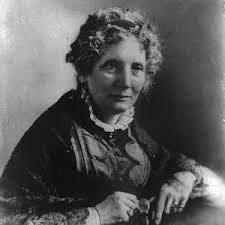
Through experiences such as this, Harriet gained a close hand knowledge of the institution of slavery. In 1833, she visited a slavery auction in Kentucky, an experience that profoundly moved her. She felt it her Christian duty to write about the injustice of slavery.
In 1851, she published her first instalment of Uncle Tom’s Cabin in the newspaper the National Era. By 1952, its popularity had led to its publication in book form. The book became a best-seller, selling over 300,000 copies in the first year alone.

Uncle Tom’s Cabin was a realistic account of the pain and injustice of slavery. It helped galvanise opinion in the country. It popularised the anti-slavery movement in the north. In the south, it predictably enraged opinion and led to opposition to the book.
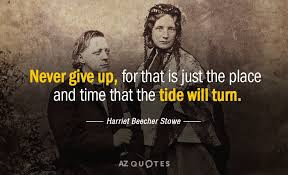
Although best remembered for the hugely influential Uncle Tom’s Cabin, Harriet also wrote a total of 20 novels and wrote on a variety of social and political issues.
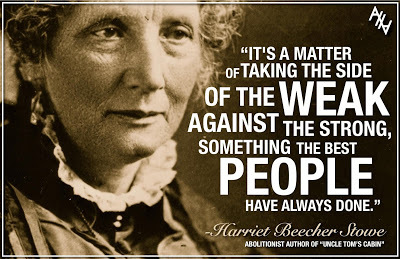
Religion was an important influence on her life. She was brought up with her father’s strict Calvinism, but as she became older she followed her own path, which included high-church Episcopalianism. After the death of her two sons, she also became interested in spiritualism (the practice of seeking contact with spirits who have passed away). Her Christian faith was very important to her life and writing.

She died on 1 July 1896 in Hartford, Connecticut aged 85. Her house the Harriet Beecher Stowe House was next door to fellow author Mark Twain.
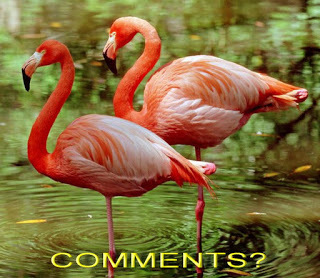
Clancy's comment: Good for her. Wow, 300,000 copies sold in the first year!
I'm ...

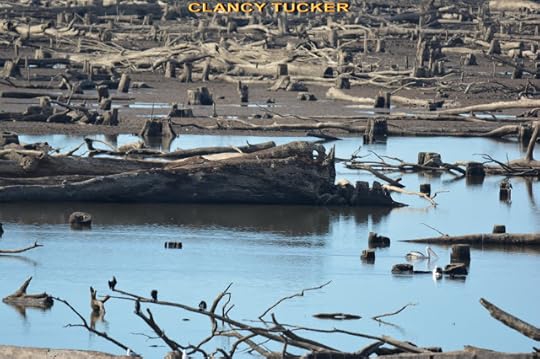
Published on November 11, 2018 11:56
November 10, 2018
11 November 2018 - THE AMAZING PANGOLIN
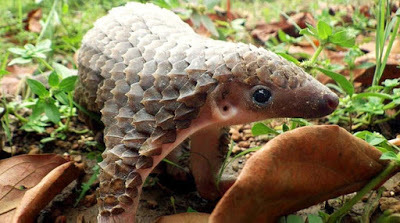
THE AMAZING PANGOLIN
G'day folks, I’m continually finding creatures that I’ve never heard of. Here is one of them.
Pangolins are the only mammal in the world to be covered from head to toe in scales, and they eat an enormous 70 million insects every year.

Quick FactsType: MammalDiet: CarnivoreLife span: up to 45 yearsWeight: 4.4-7 lbs (1.8-2.1kg)Size: Length 12-39 inches (30-100cm)Habitat: Forests and GrasslandsRange: Asia and AfricaScientific name: Pholidota Amazing Facts About the PangolinThe Pangolin, otherwise known as the scaly anteater, is the only mammal in the world to be covered from head to toe in keratin scales (the same as human finger nails). These scales account for up to 20% of a Pangolin’s entire weight.There are eight species of Pangolin. Four are found in Asia: the Chinese, the Malayan, the Indian and the Palawan Pangolin. Four are found in Africa: the Tree Pangolin, the Giant Ground Pangolin, the Cape Pangolin and the Long-tailed Pangolin.They inhabit tropical forests, dry woodlands and the savannah. Some pangolins spend their time up in trees and others sleep in burrows underground.They are about the size of a small cat, are covered in brown scales, and have long, strong tails that can be used as a weapon. The name Pangolin is derived from the Malay word ‘pengguling’, which means ‘rolling up’. This is reference to the animal’s defence mechanism of rolling up into a tight little hardened ball when they are under threat.Rolling up creates a hard, spiky, impenetrable ball that can defeat even the jaws of lions, tigers and leopards. However, by cruel coincidence, it is this same defence mechanism that makes human capturing of the pangolins as easy as picking up a ball.Like a skunk, pangolins can release a noxious- smelling acid to deter predators.Pangolins have a long sticky tongue that grows from deep inside their chest cavity and can extend to over 40cm, which is longer than its own body! This tongue is a perfect tool for catching insects. One Pangolin is estimated to catch a massive 70 million a year.
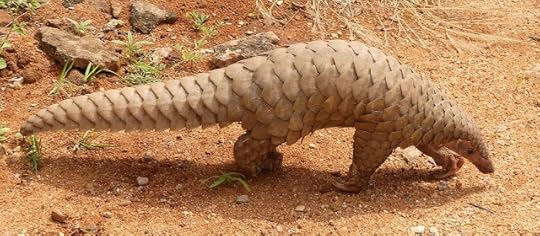
With no teeth, and unable to chew, the insects are broken up by stones and keratin spines located inside their stomachs. It is unknown how long pangolins live for because captivity is traumatic for pangolins resulting in stress, depression and early death. However, the oldest recorded Pangolin in captivity died at 19 years old. They are nocturnal, solitary animals with very poor eyesight. Their sense of smell and sound is supreme and is used to hunt out termite mounds and ant hills. Cute pangolin pups hitch a ride on their mother’s tails for three months and remain in their mother’s care for five months before braving life solo. In some pangolin species the male can be up to 90% heavier than females. This type of uneven weight is called being ‘sexually dimorphic’. Sadly, this tough looking little mammal is on the edge of survival with some populations classified as Critically Endangered. They are the most trafficked animal in the world which has led to more than a million being stolen from the wild. The IUCN estimate that a Pangolin is taken from the wild every 5 minutes!
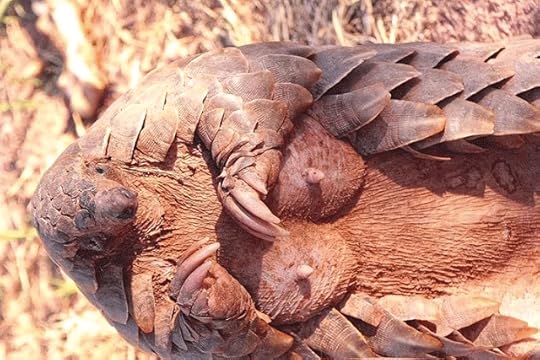


Clancy's comment: Amazing nature, eh? 70 Million insects a year! Wow!
I'm ...
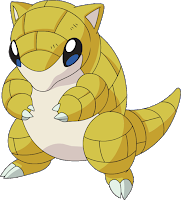

Published on November 10, 2018 11:32



